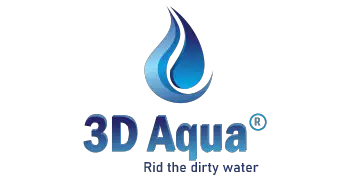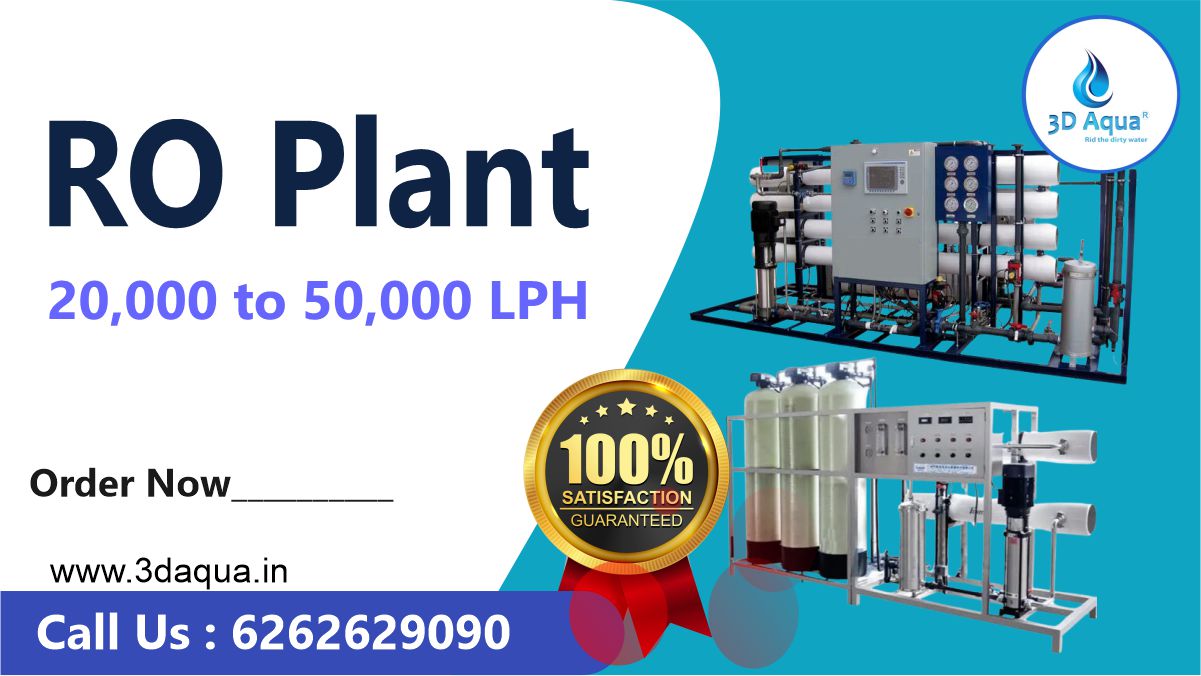In today’s rapidly evolving world, access to clean, purified water is more crucial than ever. Whether for industrial, commercial, or residential use, Reverse Osmosis (RO) systems play a pivotal role in ensuring the availability of clean water. The demand for high-capacity RO plants, ranging from 20,000 LPH (Liters per Hour) to 50,000 LPH, is growing, as businesses, municipalities, and industries require large volumes of purified water.
In this article, we will explore the features, benefits, and applications of RO systems designed for high-output water treatment, ranging from 20,000 LPH to 50,000 LPH. Additionally, we will delve into the customization options, price variability, and maintenance considerations that make these systems a reliable choice for a wide variety of water treatment needs.
What is an RO System and Why Choose One?
A Reverse Osmosis (RO) system is a water purification technology that removes contaminants from water by forcing it through a semi-permeable membrane. This membrane allows only pure water molecules to pass through while blocking harmful substances such as salts, bacteria, heavy metals, and other impurities.
RO systems are widely used in various applications including industrial processes, drinking water purification, and wastewater treatment. They offer high efficiency in producing purified water and ensure that the output meets the desired quality standards. For applications requiring large volumes of clean water, such as factories, municipal water supply systems, and large-scale agricultural operations, high-capacity RO systems ranging from 20,000 LPH to 50,000 LPH are essential.
Key Features of High-Capacity RO Systems (20,000 LPH to 50,000 LPH)
When choosing an RO system with a capacity of 20,000 LPH to 50,000 LPH, it is crucial to understand the features that make these systems efficient, reliable, and cost-effective. Below are the key features of these high-capacity RO systems:
1. Continuous Operation and High Automation
One of the standout features of RO systems in the 20,000 LPH to 50,000 LPH range is their ability to provide continuous water production. These systems are designed to operate for up to 20 hours a day, offering high levels of automation to ensure smooth and consistent operation. The automation reduces the need for manual intervention, making the system highly efficient and low-maintenance.
2. Comprehensive Protection Mechanisms
High-capacity RO systems are equipped with built-in protection mechanisms to ensure the safety and longevity of the system. These include:
- Under Voltage Protection: The system automatically shuts down if the voltage drops below a specified level, preventing potential damage to the equipment.
- Over Current Protection: Prevents damage to the system’s electrical components if the current exceeds safe limits.
- Short Circuit Protection: Safeguards the system against electrical faults.
- Creep Age Protection: Ensures that the system is safe from gradual wear and tear that could lead to failure.
3. Automatic Water Level Control
The RO systems are designed with automatic water level control. The system automatically switches on when the water level is low and turns off when the tank reaches the desired high water level. This feature prevents dry running of the pumps and optimizes energy use, ensuring the system operates only when needed.
4. Automatic RO Membrane Flushing
One of the critical maintenance features of high-capacity RO systems is automatic membrane flushing. This system reduces the rate at which the RO membranes become contaminated, extending their lifespan and improving the efficiency of the entire water treatment process. The automated membrane flushing helps in reducing fouling and scaling of the membranes, which is essential for maintaining long-term system performance.
5. Water Shortage Protection for Multistage Pumps
The system includes water shortage protection for multistage pumps, which ensures that the pump does not run dry. This is especially important for high-capacity RO systems as it helps prevent pump damage, improving the overall reliability and longevity of the system.
6. Online TDS/Conductivity Meter for Water Quality Monitoring
To maintain the quality of the purified water, these RO systems are equipped with a Total Dissolved Solids (TDS) and conductivity meter. This meter continuously monitors the water quality, providing real-time data on the TDS levels and ensuring that the output meets the required standards. This feature also helps in detecting any issues early, ensuring that the system is always delivering pure water.
7. Low Operational Cost and Long Lifespan
These high-capacity RO systems are designed to be energy-efficient and cost-effective. With minimal power consumption, they offer a low operational cost, making them ideal for industries or municipalities looking for a sustainable and economical water treatment solution. Additionally, these systems are built to last, with high-quality components that ensure a long operational lifespan, reducing the need for frequent replacements.
8. Quality RO Controller for Automatic Operation
A high-quality RO controller plays a central role in the automated operation of these systems. The controller ensures that the entire RO system runs seamlessly, automatically adjusting settings such as flow rate, pressure, and water recovery to optimize performance. This intelligent controller makes the system easy to operate and reduces human intervention, increasing efficiency.
9. Ease of Control and Maintenance
RO systems in this capacity range are designed to be user-friendly, offering simple control interfaces for operators. Moreover, maintenance is made easy with clear diagnostic indicators and accessible components for repairs or replacements. The automatic features also reduce the need for regular manual checks, allowing maintenance to be scheduled based on system usage rather than constant monitoring.
10. Auto Backwash and Flush
The auto backwash and flush features ensure that the system’s filters and membranes are properly cleaned, reducing the buildup of debris or contaminants that could affect the system’s performance. These automatic flush and backwash processes help maintain high efficiency while minimizing downtime and manual labor.
11. Pressure Protection Features
High-pressure protection is critical for large-scale RO systems. These systems are equipped with mechanisms to prevent damage from excessive pressure, which could harm sensitive components like membranes or pumps. This safety feature ensures that the system operates within its optimal pressure range, extending its operational life.
Customization and Pricing for RO Systems (20,000 LPH to 50,000 LPH)
One of the key advantages of these high-capacity RO systems is their customizability. Whether you need a specific type of membrane, a particular design for your facility, or additional features like specialized filtration, these systems can be tailored to meet your exact needs.
The price of these systems may vary depending on several factors, such as:
- Capacity: Higher-capacity systems typically cost more due to the additional components and larger membranes required.
- Customization: Custom-built systems with specific features or configurations will have a higher price point.
- Quantity: Bulk orders often come with price discounts, making it more cost-effective for large-scale projects.
- Brand and Components: Different manufacturers may offer varying quality and prices based on the components they use, such as pumps, membranes, and controllers.
To get an accurate quote, it’s best to discuss your specific requirements with a supplier who can provide a customized solution based on your needs.
Applications of RO Systems (20,000 LPH to 50,000 LPH)
RO systems in the 20,000 LPH to 50,000 LPH range are versatile and can be used in a variety of sectors:
- Industrial Applications: Large factories and manufacturing plants often require significant quantities of purified water for processes such as cooling, cleaning, and production. These high-capacity RO systems are ideal for industries like pharmaceuticals, chemicals, and food processing.
- Municipal Water Supply: For cities or large towns, high-capacity RO systems are used to purify water on a large scale, providing clean water for drinking, sanitation, and other needs.
- Agricultural Use: Large-scale agricultural operations use RO systems to treat water for irrigation. Purified water ensures optimal growth and crop quality, especially in areas with saline or contaminated groundwater.
- Commercial Establishments: Hotels, resorts, and large commercial complexes often install high-capacity RO systems to meet the water requirements of their guests and facilities.
- Desalination Projects: RO technology is widely used in seawater desalination plants, where large volumes of seawater are converted into fresh, potable water.
Conclusion: Choosing the Right RO System for Your Needs
Choosing the right high-capacity RO system (20,000 LPH to 50,000 LPH) is a crucial decision for any industrial or commercial water treatment need. It is important to consider factors such as system efficiency, maintenance, water quality requirements, and cost when making your choice.
At 3D Aqua, we specialize in providing customized, cost-effective, and high-quality RO water treatment solutions. Whether you need a system for an industrial plant, municipal supply, or large-scale agricultural operation, we can design and manufacture a solution tailored to your specific needs.
For more information, or to inquire about a customized RO system, feel free to contact us at 6262629090 or visit our website at 3daqua.in. Our team is ready to help you choose the best solution for your water treatment requirements, ensuring a sustainable, reliable, and efficient water supply for your business or community.

